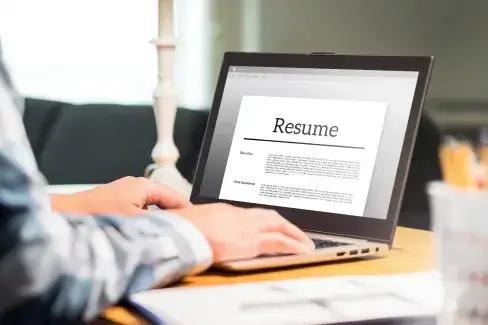Storytelling in Your Resume: Why and How
The contemporary resume with its bullet points and terse clipped phrases seems antithetical to any type of storytelling device. Some players in the hiring process – particularly recruiters – tend to want candidates to stick to the facts in their resumes.
Others, however, especially those who make direct hiring decisions appreciate a resume that opens a window to your personality through storytelling.
“Your resume should be about … telling stories that register,” writes Seth Godin in All Marketers Are Liars. In this 2002 book Making Stories: A Practical Guide for Organizational Leaders and Human Resource Specialists.
Terrence Gargiulo points out that human resources managers prepare to interview candidates by reading resumes with their “story mind.” Putting himself into the mindset of HR people, he envisions using the information in the resume to “construct a story and image of the person.”
When read by human eyes, your resume will get the reader’s attention for only 2.5 to 20 seconds. In his popular book about intuition Blink! Malcolm Gladwell talks about “thin-slicing,” which he defines as, “The ability of our unconscious to find patterns in situations and behavior based on very narrow slices of experience.”
Employers can be said to “thin-slice” when they glance at a resume. Rare is the employer who will read even close to the entire resume on the first pass. Yet they will usually put your resume into a “yes” “no” or “maybe” pile based on the tiny slice of your resume that actually catches their attention. That’s why a compelling narrative can be key to compelling your reader to continue on with reading. The usual thin slices of your experience served up in a resume don’t enable you to weave a theme to resonate with the employer.
“Too long and boring” comprise two of the top complaints about most resumes, voiced by Liz Ryan of WorldWIT. Contributing to a blog called “Get That Job!” Ryan cites one of her favorite resumes — from a controller who includes this telling line on his resume: “Unusually wicked sense of humor for a Finance type.” Ryan notes that “the human need for stories should be a vital clue to job-hunters whose resumes often have as much dramatic punch as the back of a cereal box. Your resume is your marketing brochure. It has to tell your story.”
Ryan suggests reading through your resume with the fresh eyes of an employer who will wonder “Who is this person?” An unnamed blogger on the blog Fincareer similarly writes that “by highlighting and interpreting experiences in light of the job or career alternative you are contemplating your story will get the quality and coherence needed to win a recruiter’s trust and interest.” With a storied resume you can often explain the rationale and value of what you’ve done.
Just as valuable as the resume itself is the process of compiling it, writes Herminia Ibarra and Kent Lineback in Harvard Business Review, because “it entails drafting your story.” The authors advise that “everything in the resume must point to one goal — which is of course the climax of the story you’re telling.” They cite a job seeker who better defined what excited her about her chosen field every time she wrote her story in a piece of job-search communication.
Create a resume in minutes that will impress hiring managers
Build ResumeMost employers also want to see substantiation of your claims about yourself which is something you can accomplish through storytelling. Too many resumes are collections of adjectives and meaningless puffery with no stories to back up their claims.
Story-based resume guidelines
- Use the top of your resume to tell who you are.
Use the summary section of your resume to tell the story of who you are professionally. - Storify your accomplishments.
KPMG Principal Mary Anne Davidson observed on the HR.com Website “Candidates write about what their positions entailed and not what they actually did. So they tell us their job was to do XYZ. I know what controllers do. I know what recruiters do. I need to know what accomplishments you made in your role. This makes you different than another candidate.”Susan Britton Whitcomb author of Resume Magic one of the most highly recommended resume books on the market calls accomplishments “the linchpin of a great resume.” Her chapter on accomplishments is one of the best sources to help you compose effective accomplishments stories. See also our comprehensive accomplishments section. - Ensure your resume is accomplishments-driven.
To a great extent if a job activity cannot be portrayed as an accomplishment it may not be worthy of mention in your resume. Thus your resume should be primarily accomplishments-driven (rather than driven by duties and responsibilities) and accomplishments are best communicated in story form. - List resume accomplishments in REVERSE order.
Accomplishment stories should include the situation, problem or challenge that contextualizes your achievement; the action you took; and the results you attained; however, you should tell this story in reverse order — results action problem/situation/challenge.Why? Because as we noted earlier the employer looks at your resume so quickly. Results need to be listed first for each accomplishment so these outcomes catch the reader’s eye. - Deploy supplemental documents for storytelling.
Some professional resume writers use the tactic of going easy on the story approach in the resume itself but letting loose with stories of accomplishments, results and outcomes in a resume addendum or career biography. - Keep resume stories concise.
Most employers prefer a resume that is formatted mostly in bullet points — which don’t exactly lend themselves to storytelling. You can tell stories in resume bullet points but they must be concise, not wordy. Think of a story-based resume as “story lite.” You can go into more detail in a resume addendum in your cover letter and later in your interview.Focus-group participants emphasized the conciseness point repeatedly, strongly cautioning against wordiness, overblown adjectives, too much information and the impact of accomplishments lost in a sea of text. One participant said, “If you could combine the brevity of [the non-storytelling resume] with the numerical details of [the story-based resume] that would be the preferred ideal.”
- Use the top of your resume to tell who you are.






